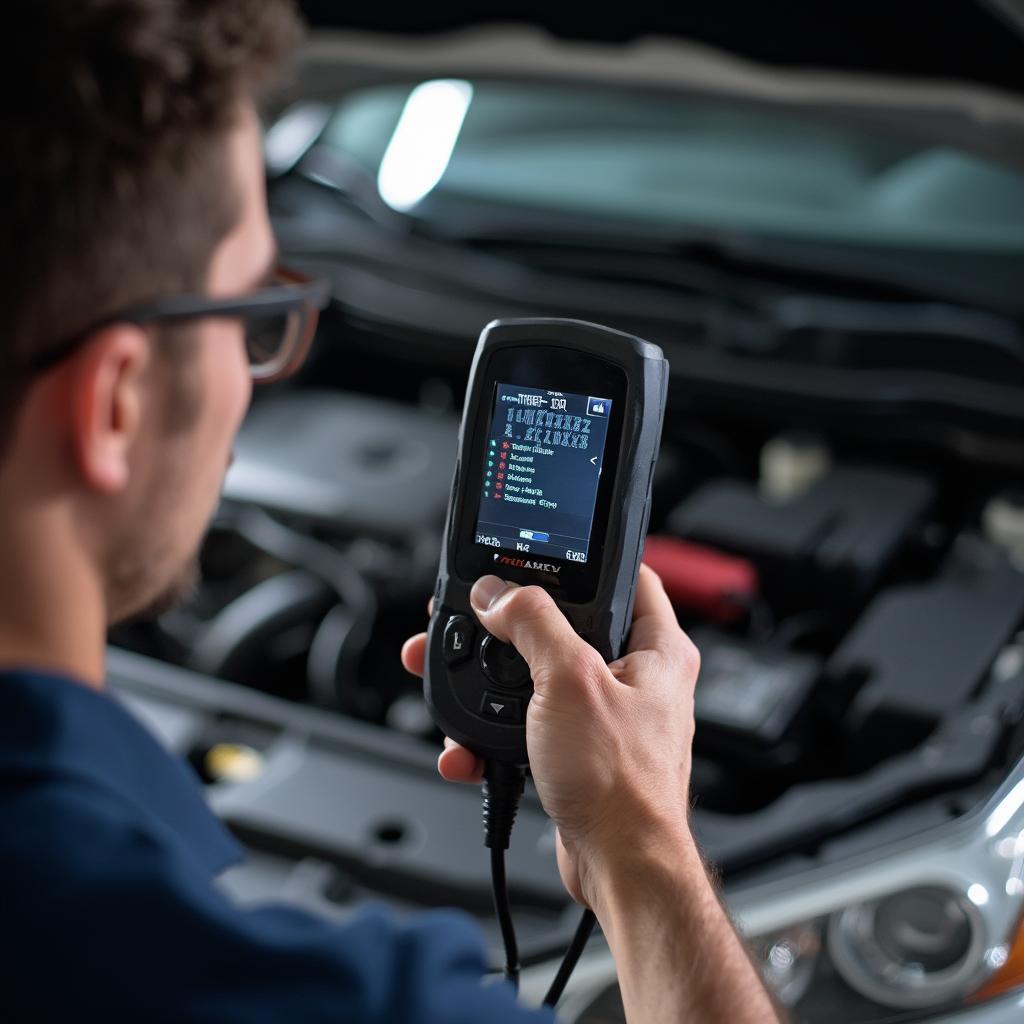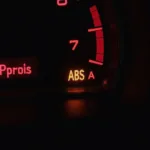Checking spark plugs traditionally involves manually removing and inspecting them. However, an OBD2 scanner can offer valuable insights into spark plug performance and help identify potential issues without getting your hands dirty. This article dives deep into how to effectively use your OBD2 scanner to assess your spark plugs and maintain optimal engine health.
While an OBD2 scanner cannot directly “see” the physical condition of your spark plugs like a visual inspection, it can detect misfires, which are often a key indicator of faulty spark plugs. Understanding these misfire codes is crucial for using your OBD2 scanner effectively. Can you check spark plugs with obd2? Yes, indirectly, by analyzing misfire codes.
Understanding OBD2 Misfire Codes
OBD2 scanners detect misfires by monitoring the crankshaft’s rotation speed. A sudden fluctuation in this speed can suggest a cylinder isn’t firing correctly. These fluctuations are then translated into specific diagnostic trouble codes (DTCs), typically starting with P0300 (random misfire) or a more specific code like P0301 (cylinder 1 misfire), P0302 (cylinder 2 misfire), and so on. For instance, a ford obd2 code po300 indicates a random misfire, making it harder to pinpoint the exact cylinder affected.
Identifying the Culprit Cylinder
Codes such as P0301-P0308 pinpoint the specific cylinder experiencing the misfire. This information is invaluable, allowing you to narrow down the potential causes, which could include a faulty spark plug, a bad ignition coil, or a fuel delivery problem. How to check spark plugs with obd2 involves interpreting these codes.
 Mechanic using an OBD2 scanner to diagnose engine misfires.
Mechanic using an OBD2 scanner to diagnose engine misfires.
Beyond Misfire Codes: Other Clues from Your OBD2 Scanner
Apart from misfire codes, other OBD2 data can hint at spark plug issues. For example, poor fuel economy can indirectly point to inefficient combustion, potentially caused by worn spark plugs. Similarly, reduced engine power can be a symptom of misfires stemming from bad spark plugs.
Using an obd2 scanner app for cylinder misfire
Many excellent OBD2 scanner apps are available for smartphones, providing a convenient and affordable way to access engine data. These apps can display misfire codes and other relevant information, helping you pinpoint potential spark plug problems.
When a Misfire Isn’t a Spark Plug Problem: What Else Could It Be?
Misfires aren’t always caused by bad spark plugs. Other culprits include:
- Faulty Ignition Coils: These coils provide the high voltage necessary for the spark plugs to fire. A failing coil can lead to misfires.
- Vacuum Leaks: Leaks in the intake manifold can disrupt the air-fuel mixture, causing misfires.
- Fuel Injector Problems: Clogged or malfunctioning fuel injectors can prevent the proper amount of fuel from reaching the cylinder.
- Low Compression: Low compression in a cylinder can prevent proper combustion, resulting in misfires.
Sometimes, you might encounter a situation where your obd2 says misfire on a cylinder but vehicle runs smooth. This can be perplexing and requires further investigation to pinpoint the root cause.
“Regularly monitoring your vehicle’s performance with an OBD2 scanner can prevent small problems from escalating into major repairs,” advises John Smith, ASE Certified Master Technician. He adds, “Even if you’re not experiencing noticeable issues, periodic checks can identify potential problems early on.”
Conclusion: How to Check Spark Plugs with OBD2 Effectively
Learning how to check spark plugs with obd2 is a valuable skill for any car owner. While an OBD2 scanner doesn’t replace a physical inspection, it provides crucial information about misfires and other performance issues that can indicate failing spark plugs. By understanding these codes and other data points, you can better diagnose your vehicle’s health and take appropriate action. Learn more about using your OBD2 scanner effectively with our guide on how to check spark plugs with obd2 scanner.
Need further assistance? Contact us via WhatsApp: +1(641)206-8880, Email: [email protected] or visit us at 789 Elm Street, San Francisco, CA 94102, USA. Our 24/7 customer support team is ready to help.

